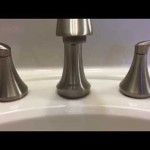What Cleans Mold Off Bathroom Walls
Mold growth in bathrooms is a common problem due to the high humidity and potential for water leaks. Its presence not only detracts from the aesthetic appeal of the space but also poses health risks, especially for individuals with respiratory sensitivities. Removing mold from bathroom walls effectively requires a combination of cleaning solutions, proper technique, and addressing the underlying cause of moisture. This article outlines the most effective methods to clean mold off bathroom walls and prevent its recurrence.
1. Identifying and Assessing Mold Growth
Before embarking on any cleaning solution, accurate identification and assessment of mold growth are essential. Mold can appear in various colors, including black, green, white, and even gray. Its texture may range from fluffy to slimy, and its odor can be musty or earthy. A thorough visual inspection of the bathroom walls, particularly in areas prone to moisture, such as around the shower, bathtub, and sinks, is crucial. If the affected area is extensive or the mold is particularly thick, professional help may be required.
2. Preparing for Mold Removal
Prior to cleaning mold, it is crucial to protect yourself and the surrounding environment. Wear protective gear, including gloves, a mask, and goggles, to minimize exposure to mold spores. Adequate ventilation is essential throughout the cleaning process. Open windows and doors to allow air circulation, preventing mold spores from becoming airborne. Additionally, ensure the area is adequately lit to provide clear visibility during the cleaning process.
3. Effective Mold Removal Solutions
Several solutions are effective in removing mold from bathroom walls. The best choice depends on the severity of the mold, the material of the wall, and personal preference. Some common options include:
- Bleach Solution: A bleach solution is a potent disinfectant often used for mold removal. Mix one part bleach with ten parts water in a spray bottle. Apply the solution liberally to the infected area, ensuring complete coverage. Allow the solution to sit for ten to fifteen minutes before scrubbing the area with a stiff-bristled brush. Rinse thoroughly with clean water and allow the area to dry completely.
- Borax Solution: Borax is a natural mineral with antifungal properties. Mix one part borax with one part water in a spray bottle. Apply the solution to the mold-affected area and allow it to sit for several hours. Scrub the area with a brush and rinse thoroughly with clean water.
- Commercial Mold Cleaners: Numerous commercially available mold cleaners are specifically formulated for mold removal. These cleaners often contain bleach, borax, or other chemicals, ensuring effectiveness. Follow the instructions provided on the product label carefully.
- White Vinegar: White vinegar is a natural disinfectant that can be effective in removing mold from porous surfaces such as grout. Spray the affected area with undiluted white vinegar and allow it to sit for at least thirty minutes. Scrub the area with a brush, rinse with clean water, and allow the area to dry completely.
4. Addressing the Root Cause
Cleaning mold from bathroom walls is only a temporary solution. To prevent its recurrence, it is crucial to address the root cause of the moisture problem. This may involve identifying and repairing leaks, improving bathroom ventilation, and adjusting showering habits.
- Repairing Leaks: Leaks in pipes, faucets, and showers can lead to excess moisture, creating ideal conditions for mold growth. Repairing these leaks promptly is crucial to prevent further mold growth and structural damage.
- Improving Ventilation: Inadequate ventilation allows moisture to accumulate in the bathroom, promoting mold growth. Install exhaust fans with proper ventilation systems to remove excess moisture and ensure adequate air circulation.
- Showering Habits: Showering habits can also contribute to mold growth. Limit showering time, use the shower door or curtain effectively to minimize water splashing, and allow the bathroom to dry completely after showering.
5. Preventing Future Mold Growth
Regular cleaning and maintenance are essential in preventing future mold growth. Clean bathroom surfaces, including walls, floors, grout, and showerheads, regularly to remove any accumulated moisture and mold spores. Consider using a mold-resistant sealant on bathroom walls and grout to create a barrier against moisture and prevent mold from adhering to the surface.

How To Remove Mold From Walls True Value

How To Clean Mould Off Walls Very Effective And Safe Way Kill Prevent Express Co

Black Mold In The Shower How To Clean It Kitchen With Matt

How To Remove Mold From Bathroom Walls 6 Cleaning Tips

The Ultimate Guide On How To Clean And Get Rid Of Mold Pro Housekeepers

Moldy Wall Care Smart Tips For Getting Mold Off Bathroom Walls

How To Get Rid Of Mold In The Shower On Bathroom Walls Clorox

Bathroom Ceiling Mold Removal When To Clean Call Branch Environmental

Kill Bathroom Mould Without Bleach Electrodry Blogs

The Ultimate Guide On How To Clean And Get Rid Of Mold Pro Housekeepers







